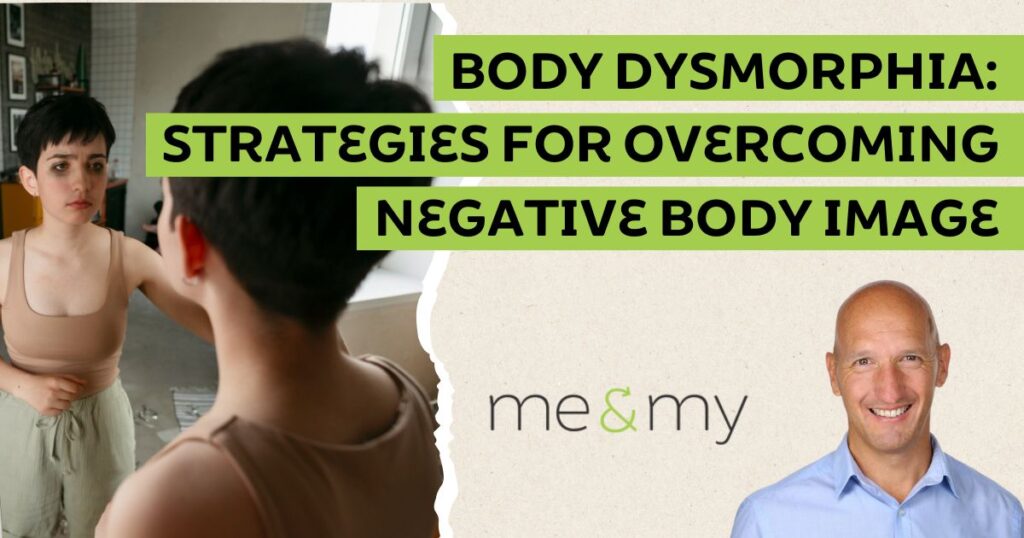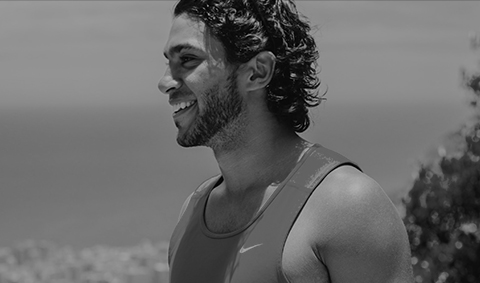Body Dysmorphia: Overcoming Negative Body Image and Finding Your Value

In today’s social media-driven world, where images of “perfect” bodies are constantly bombarding us, BDD is becoming increasingly common, particularly amongst young people. Body Dysmorphia Disorder (BDD) affects an estimated 20% of young people, leading to a distorted perception of one’s body and an incessant fixation on perceived flaws that are often unnoticeable to others.
This blog post inspired by the insightful episode of me&my health up podcast, explores the key aspects of body dysmorphia, drawing on insights from a recent podcast episode. We’ll discuss the signs and symptoms of BDD, the impact it can have on your well-being, and most importantly, explore strategies for overcoming negative body image and embracing self-compassion.
Watch the full podcast episode here:
The Illusion of Body Dysmorphia
Body dysmorphia is characterised by an obsessive focus on perceived defects or flaws in one’s physical appearance, often to the extent where daily life is affected. This condition stems from a complex interplay of psychological, environmental, and possibly genetic factors, with social media playing a significant role in exacerbating these perceptions.
The constant comparison with idealised images can distort self-image, creating an illusion of inadequacy and incompleteness.
Understanding the Brain’s Role
At the core of body dysmorphia lies the brain’s distortion mechanisms. The human brain, comprising the emotional and survival centers, often reacts to social comparisons in the same way it would to a physical threat, like a tiger’s presence.
This survival instinct, while beneficial in genuine danger scenarios, can lead to exaggerated and unrealistic perceptions of oneself when triggered by non-life-threatening situations, such as comparing oneself to others on social media.
Maslow’s Hierarchy of Needs and Body Image

Maslow’s hierarchy of needs outlines the human quest for fulfillment, starting from basic survival to achieving self-actualisation. Individuals suffering from BDD often find themselves trapped in the lower tiers of this hierarchy, focusing on survival instincts rather than pursuing higher-level needs like self-esteem and self-actualisation. This focus can lead to a cycle of comparison, self-criticism, and the pursuit of unattainable ideals.
The Influence of Social Media

Social media platforms, with their barrage of highly curated and often unrealistic images, contribute significantly to feelings of inadequacy and body dysmorphia. The comparison with these idealised images can lead to a distorted sense of self and exacerbate feelings of not being ‘enough’. Recognising and mitigating the impact of these platforms is crucial for mental health and well-being.
The Impact of Body Dysmorphia

The impact of BDD extends far beyond a preoccupation with appearance. It can affect various aspects of a person’s life, including:
- Relationships: The fear of being judged can strain relationships with family, friends, and romantic partners.
- Work and education: Difficulty engaging in social situations can hinder academic or professional performance.
- Physical health: BDD can lead to unhealthy eating habits or neglecting self-care due to a distorted body image.
- Quality of life: The constant anxiety and negative self-perception can significantly diminish overall well-being.
Building Self-Esteem: Beyond Body Image

While BDD often manifests as a preoccupation with physical appearance, the root cause might lie deeper. Here are some additional strategies to build self-esteem and address underlying issues:
- Identify Your Values: What truly matters to you in life? Focusing on your passions, goals, and contributions to the world helps cultivate a sense of self-worth independent of appearance.
- Practice Self-Care: Prioritise activities that nourish your mind, body, and soul. This could involve healthy eating, regular exercise, getting enough sleep, or pursuing hobbies you enjoy.
- Develop a Growth Mindset: Embrace challenges as opportunities for learning and growth. Celebrate your efforts and progress, not on achieving perfection.
- Seek Professional Help: If you find it challenging to manage BDD on your own, don’t hesitate to seek professional help. A therapist or counsellor specialising in cognitive behavioural therapy (CBT) can equip you with strategies to challenge negative thinking patterns and develop healthier coping mechanisms.
Conclusion: Embracing Self-Acceptance
Body dysmorphia can be a challenging condition, but it’s important to know you’re not alone. By understanding the signs and symptoms, seeking professional help if needed, and focusing on self-compassion and your unique strengths, you can overcome negative body image and build a healthier relationship with yourself.
Remember, true beauty lies not in a perfect physique, but in the love, gratitude, and unique brilliance you bring to the world. Embrace your individuality, cultivate self-acceptance, and celebrate your “superpowers.”
Discover a Path to True Wellness with me&my wellness
At me&my wellness, we understand the deep-seated challenges that body dysmorphia presents, not just to your physical health but to your overall well-being. That’s why our holistic health coaching is designed to align with your unique health and wellness goals, offering you personalised support on your journey towards self-acceptance and well-being.
If you’re ready to embrace a holistic approach to overcome body dysmorphia and reclaim your health, book a 15-minute FREE consultation with us today. Together, we’ll explore strategies that resonate with your individual needs, fostering a balanced and fulfilling life.

